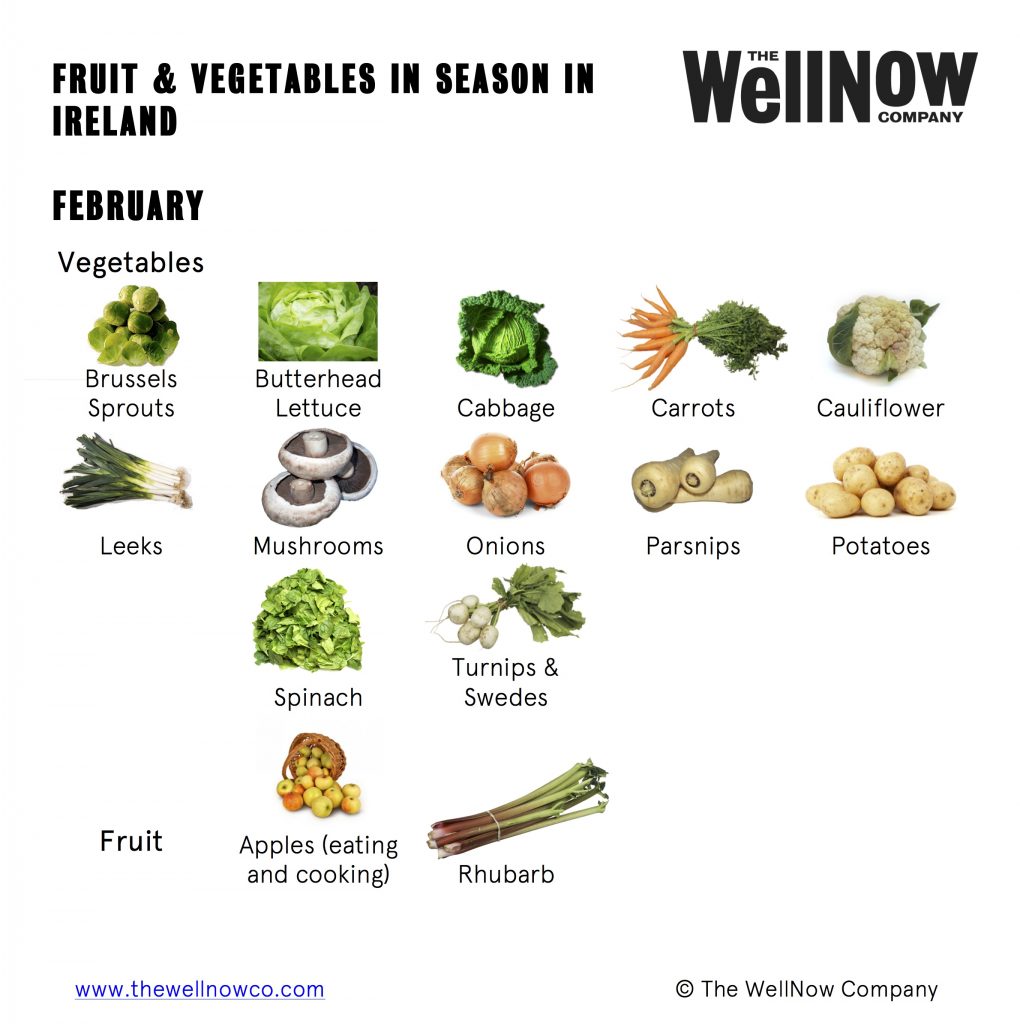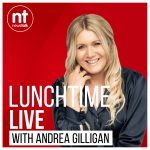
Suzanne Leyden, qualified nutrition, health and wellness coach and owner of The WellNow Co. outlines what’s in season in Ireland this February and highlights some healthy, simple and delicious recipes.
It’s February and we are firmly in the new year. Whatever resolutions or intentions we set for ourselves may have waned or fallen by the wayside entirely. But do not lose hope. You had the enthusiasm to set these changes for yourself only a month ago. Maybe if you approach them in a different way then they can become part of your routine. This is where smart planning comes into play.
February is not a month known for its abundance of fresh foods, so we need to dig deep (pardon the pun) and make the most of what we have. Knowing what’s in season is a major part of that. When we look at the core ingredients of what’s in season – leeks, mushrooms, potatoes – we can already conjure up the aromas of beautiful comfort food coming from the kitchen.
Here’s what’s in season in February in Ireland

- Apples – cooking and eating
- Brussels Sprouts
- Butterhead Lettuce
- Cabbage
- Carrots
- Cauliflower
- Leeks
- Mushrooms
- Onions
- Parsnips
- Potatoes
- Rhubarb
- Spinach
- Turnips & Swedes
PLANNING FOR CHANGE
If you are looking to make changes to how and what you eat planning is key to making it work. Whether it’s for environmental reasons, ethical reasons or you simply would like to manage your weight better for your health, then creating a clear plan is what will help you succeed.
WRITE DOWN YOUR GOALS
Start with writing down your goals. Did you know that you are 42% more likely to succeed at something if you write it down? According to a goal-setting study led by Dr. Gail Matthews, Psychology Professor this was the result. Writing down goals helps you get clarity on what you want to achieve.
Being aware of what’s in season can help inform your meal planning and shopping. This gives you more nutritional bang for your buck at cost effective prices and supports local producers too. Write down your plan for the week, being as specific as possible, then write a shopping list to avoid picking up anything unnecessary at the shops.
CLEAR STRUCTURE
Look at what essential steps need to be achieved in order to get you to where you want to be. Create a timeline for achieving these smaller steps. Once you establish this clear structure it will act as a motivational tool in itself. You will see that it is achievable, how long it can take and now you just need to follow the steps to get there to stay on track.
Choose the day that suits you best to organise yourself for the week ahead in terms of meals. Take your time to think through each meal and figure out what you need.
For example, you might choose to plan Monday and Wednesday as freezer days. You can batch cook two recipes a week, one at the weekend and one on a day that works well for your schedule, say Sunday and Thursday. One pot dishes are really good for this, think currys or Bolognese. By doing this you will always have a good stash of a range of dinners in your freezer. You could do something interesting that takes a little more time on a Saturday. And you could do a simple pasta and salad on a Tuesday. This leaves Friday for maybe going out, or doing a favourite dish to mark the weekend. Once you have the structure for the days of the week like this your meal plan will be done really quickly.
MEASURABLE
By creating this clear structure you have made your path to success measurable. As you succeed with the small steps you can tick them off as you go. You can decide to celebrate at certain milestones, or when you reach your endpoint. You are in the driving seat and make the choices to stay on the path to your success. By making it measurable you can track your progress and stay motivated until the end.
Once you are regularly meal planning it takes less and less time each week. You may look for additional inspiration if you are getting a bit bored with what you’re cooking. RTE’s recipe archive is a brilliant resource to tap into for delicious ideas for everyone.
RECIPES

Rhubarb
Hailing from Tibet originally, rhubarb leaves are poisonous and the stems must be cooked to be consumed or they will be toxic. With their bitter taste, rhubarb stems usually require a sweetener to be added when cooking. Although much of the vitamin C they contain is lost in cooking, they are a great source of fibre, contain some calcium and a long list of phytonutrients. I wanted to include both a sweet and savoury recipe for this bright and cheery plant.
Sea trout with baked rhubarb, blanched samphire from Chanelle Clarke for MasterChef Ireland
Shane Smith’s rhubarb lattice pie from The Today Show
Leeks

A fibrous source of carbohydrate, leeks are also a source of potassium, folic acid, iron and calcium. They contain other vitamins and phytonutrients too. They are related to the onion and can be easier on your digestive system than their cousins. They are a common addition to winter soups but this recipe from The Happy Pear sounds amazing.
Mexican Leek and Black Bean Chilli with Guacamole from The Happy Pear
Cabbage
Green cabbage is considered high in chlorophyll, folic acid and vitamin C while red cabbage is high in vitamin A and C. Because it contains selenium it is considered a and antioxidant. And with minerals sulphur and chlorine it makes cabbage a detoxifier.
Paul Flynn’s Burrate with sticky red cabbage from The Today Show
Cauliflower
Cauliflower is made up of about one quarter protein so it a great choice for vegetarians or vegans. It is also high in potassium, folic acid and vitamin C. It’s such as versatile vegetable and can be eaten raw or cooked.

Rachel Allen’s Cauliflower steaks with ginger from The Today Show
Cauliflower & Potato
In addition to cauliflowers (see above) this recipe’s potatoes are a great source of potassium and also high in C and B vitamins.
Cauliflower and potato curry from Operation Transformation
YOUR PLAN FOR YOU
You may want to get more experimental with what you eat and try a new recipe every week. Or you may want to have a considerable re-look at your eating habits overall. Once you are really ready to make changes to your diet or lifestyle, that is a huge influence on the successful outcome. Planning and writing it down will really help to motivate you to make it a solid habit. A really important aspect of setting goals and knowing we’ve achieved them is that ability to stop doing them for a period of time – say a holiday – but have the confidence we can return to doing them with ease after the break from them. Whatever works best for you is the right thing for you.






